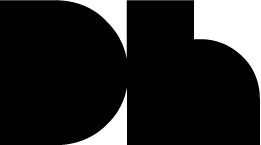Amidst the rollout of the COVID-19 vaccine last spring, many people expressed hesitancy about its safety and efficacy, while myths about the vaccine circulated on social media.
Silos of misinformation emerged in many vulnerable and underrepresented populations, and concerns driven by cultural considerations and historical trauma surfaced, all to the detriment of people’s vaccine readiness and health.
To combat the spread of misinformation and address vaccine hesitancy, we looked to the help and expertise of community-based message carriers.
Last year, DH partnered with the Washington State Department of Health on a program that provided more than 200 community-based organizations (CBOs) and community media outlets with funding, technical assistance and support for vaccine outreach. The CBOs serve historically underserved populations and communities disproportionately impacted by the pandemic.
When relaying accurate information about the vaccine, these CBOs learned they could forgo traditional messaging channels. Their audiences were far more receptive to challenging, complex and potentially life-saving messaging if it came from a community-based message carrier such as:
- Respected pillars of their community with shared lived experience
- Experts or organizations that understand culturally-specific concerns
- Community members who could address audiences personably and directly
Shireen Khinda, a Senior Account Director at DH, has provided guidance in all stages of this program and helped team members support community partners and their trusted message carriers.
“Mass media public health campaigns can’t reach all counties and communities across the state, and some people have been left behind in the conversation. Underserved communities deserve access to the same information and resources as everyone else, and we can help to lower barriers.”
Based on her work with the ongoing DOH project, Shireen is sharing some best practices when it comes to establishing equitable relationships with CBOs, and how to make their messages as effective as possible.
When working with trusted message carriers, don’t underestimate the “trusted” part.
CBOs know their communities inside and out, so they should ideally be determining who is best positioned to disseminate their messaging and where. DH and the Department of Health followed the lead of community experts, and then connected those organizations with whatever resources they needed — technical assistance, subject matter experts, graphic designers, translators and more — to get that information to their desired audiences. “The organizations are best positioned to make sure that their community’s questions about COVID are in a language they can understand and are tailored for different sub-audiences,” Shireen says.
Be as hands-on as a message carrier demands.
When working with CBOs, it’s important to establish clear communication lines so that message carriers can easily reach out for any guidance. You should also consider working flexibly with them, because not all organizations are working with the same resources — consider that some CBOs are being run by a handful of people — nor do they all require the exact same level of assistance. A one-size-fits-all approach can be alienating and disrespectful. “You can’t just tell them to all do the same thing, or talk to them all the same way,” Shireen says. “You can’t make progress if you aren’t genuine. You should give partners enough information and resources so they can come to their own conclusions.”
Work within an organization’s existing communication channels.
In many cases, CBOs have already established communication channels where their audiences have been getting valuable information and community updates. Those channels are a great way for trusted message carriers to tap into an existing community infrastructure. An example of this is Titre Avval, an independent newspaper for Seattle’s Persian community that began printing COVID updates that weren’t being properly translated in Persian languages elsewhere. “It seemed like such a small publication, but someone in their network confirmed that the newspaper was reaching their grandparents who don’t speak English and were out of the loop. It reassured them and clarified for them what the guidance was in the U.S. and specifically in Washington.”
Continue this work beyond the pandemic.
COVID-19 may have upended the ways we live, and it may have thrown social inequities and disparities into sharper relief. But just because the pandemic subsides doesn’t mean that our work with trusted message carriers in marginalized communities should also cease. It should also extend to social change campaigns that aren’t COVID-specific. “The end goal is to build genuine connections with these organizations and make sure that their voices continue to be heard, not just for health care, but in other sectors, too,” Shireen says.
This is valuable work, not only because it results in more authentic social change marketing, but because it amplifies voices and experiences that aren’t always given the spotlight. It’s an important first step in the journey toward better representation in all media channels.
“If organizations can actually see the value in serving those audiences and including them in their messaging work,” Shireen says, “it sets a precedent. If they can do it on a small scale, it could definitely be done on a larger scale.”
We're here to help
If you need help working through communications strategy, media engagement or audience engagement during this time, give us a call. We’re happy to talk strategy and help.

